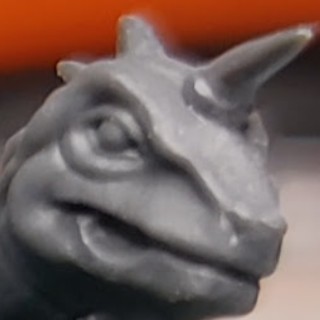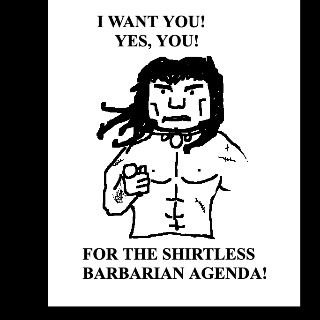I'm certainly no expert, but what I've seen of most of the standard-issue fantasy fare - including dwarves and elves - is that they all seem likely to have started their folkloric careers as the stuff of campfire ghost stories: wild, eerie, terrifying, irrational, and unreasonable things that wander in from out of the desolate places in the darkness of night, caverns, or tombs to haunt the living with incomprehensible rules, bizarre pranks, and the threat of dragging us away into the unknown to never return, or worse, to return altered in some unspeakable way.
The differences between different "races" of these ancient ghosts and night-things seems like it matters less and less the further back in time you go, with role-playing and wargames in the 20th century ramping up the supposed academic differences to far more importance than the old storytellers ever would have given them, at least, that's how it seems to me. A lot of the distinctions up to the 20th century seem to parallel the development of dictionaries and formalized spellings and such, and developments in science and technology: it seems like we just sort of hit a phase in our culture alongside or because of the Age of Reason where we really needed to pin things down into orderly categories with clear standards and definitions.
I think that by the Victorian era, we wanted to forget all those old ghost stories, tame the wild men and undead, cast away the old stories as backwards superstition, counter-productive to a new industrial age... those fairy tales should no longer be tales of bloody horror and the eldritch unknown, but instead the tuff of children's stories, or better yet, the stories that the poor and uneducated tell their children, but hopefully do not bring into your home as servants to distract your children from a far more reasonable and civilizd upbringing. The transformation into friendlier, cuter, more organized and civilized fairies and dwarves and elves probably started before the Victorian era, but that, I think, is where the transformation rolled on in earnest, until it's hard for us to imagine those ghastly, blood-soaked, malevolent old fairies today as anything but their cute Tinkerbell counterparts! "Grimms' Fairy Tales" barely hints at the ghoulish, pre-Christian horror story origins of the fantasy creaures we know well today - no offense to Tolkien or to Gygax and others following in his footsteps, but they too have done their part to civilize those old dwarves and elves and fairies into something altogether more pleasant and genteel.
Think of what it must have looked like: people have inhabited Europe for tens or hundreds of thousands of years, relative newcomers to lands that had been inhabited and abandoned many times already would stumble upon old graves and tombs - sometimes quite elaborate old tombs and buildings - while plowing up fields or digging peat up out of bogs or exploring old caves and ruins, and would unearth skeletons, sometimes eerily preserved old bodies, strangely stunted and withered down to dwarfish stature by poor nutrition and hard times, or by the methods of preservation, sometimes buried with the treasures they kept in mortal life to bring with them into the afterlife... it's tempting to loot those graves, but surely unwise, because who knows what terrible curses such weirdly preserved dead might bring to bear upon you from out of their deathly slumber in haunted halls beneath the mountains and hills?


The famous Bog Man and Otzi the Ice Man: the old dwarves and elves and fairy folk....
This template could as easily have created undead draugr and vampires as it could have dwarves or elves, or goblins and kobolds, and I have no doubt it did exactly that. It doesn't take much to make the connection to the "ancient Indian burial ground" haunted house cliche, to the most obvious plast to point one's finger when the hardships of northern European winters in dangerous, primeval forests and moors and fields fall hard upon those who have disturbed the lands where the Old Ones once walked alive by day, and now fitfully sleep, proud and irritable and terrible in their troubled graves: you've no doubt failed to leave the proper sacrifices to appease the dwarves and elves, fairies and goblins, and living dead, what else could explain why your crops have failed so miserably in spite of your best efforts, why your children wandered off into the forests to gather food like they did seemingly safely a thousand times before but this time never returned, why horrible sicknesses have plagued you ever since you broke into that spooky burial mound and ran off with the old pagan gold buried there alongside those tiny,withered, broken old bodies? You've wandered into their dark lands, taken their cursed treasures, disturbed their horrifying bodies and alien graves, broken their inhuman and unreasonable rules, what else could you expect to happen?
Who knows what such peoples might have been capable of: they built strange, and perhaps huge and awe-inspiring but long-dead civilizations where you and your family struggle to survive now. They likely knew great and terrible magic, dwelt alongside save monsters of the forests and the night and called them brothers and ancestors, they are protean and faceless and likely shifted their forms into those very monsters, changed their sizes at will into giants or turned invisible or disguised themselves as familiar people to walk among you spreading mischief, or worse.... They are not merely walking corpses or dwarves or goblins, they are trolls and ogres, witches and satyrs, werewolves, gods, the devil itself.
And maybe sometimes closer to recent memory, you could still encounter some of the living remnants of those old civilizations far out on the wildest frontiers of Europe, living desperately close to the edge of oblivion, nearer to nature than more recent newcomers to these lands - wild men, savages, perhaps cannibals, inbred and agnry at the trespassers upon their dwindling territories, and no doubt shorter, hairier, and strange-looking by comparison to those "more human" races who arrived later. No doubt many stories about these "dwarves" more closely resembled something from the Sawney Beane legend - like The Texas Chainsaw Massacre or The Hills Have Eyes or at least the raiders from those Mad Max movies - than they would something out of Tolkien! Much gets made about alien abduction stories replacing old fairy tales in the modern era and rightly so, but Hollywood's cannibal hillbilly clan trope is surely the modern man's fairy or dwarf stories....
Closer to the original topic, I guess it all depends on how you - or, more accurately, Wargames Atlantic - would define "Classic Fantasy" - is this "classic" period the early 21st century? The 1960s, 1970s and 1980s? The 1920s and 1930s and 1940s? The 19th century? Or something far older and darker still, pre-Christian and perhaps pre-Pagan as we imagine it today, the stuff of Stone Age Europe's horror stories?
Personally, I'm drawn more towards the more primeval horror story stuff, from before everything got codified and defined and civilized... or, at least, the pulp era of the early 20th century, which seems to have enjoyed a post-Victorian revival of the spirit of those old stories (see Robert E. Howard's "Worms of the Earth" or H.P. Lovecraft's "The Nameless City" for a couple wonderfully ghoulish examples!) It's probably closer to "Dark Elf and Dwerger" territory than the more usual fantasy fare we tend to get from the gaming industry, but not quite the same.
But, I have a feeling that Wargames Atlantic aims a little closer to the '60s, '70s, and '80s, and from that pool, you'll probably be looking at things like the psyechelic era's revived interest in Tolkien, alongside early D&D, Ray Harryhausen's stop-motion sword-and-sandal movies (Jason and the Argonauts, Clash of the Titans, the Sinbad movies), and perhaps a dash of Schwarzenegger's Conan the Barbarian, maybe a dash of '70s Hammer or older Universal Gothic monsters (Dracula, the Wolfman, Frankenstein, etc. in variations suitable for wargaming?), and maybe just a dash of those old technicolour Edgar Rice Burroughs, H.G. Wells and Jules Verne movies about lost worlds and journes to the center of the Earth....
With that in mind, I suspect we're most likely to see more Tolkien-inspired northern European stuff, some Harryhausen-inspired Greco-Roman mythology stuff (with perhaps just a chance of Sinbad movie inspired Arabian Nights stuff?), and a smattering of early D&D, Hollow Earth, and Conan inspired stuff depending on what they think the customers would be into.
H.G. Wells' Morlocks with fantasy and sci-fi bits would be an instant buy for me, if there were enough of a market for them for WA to want to produce a set of them!

Or, some Arabic or Persian Ghouls and evil Djinn:

I think pretty standard-issue Tolkien-style Dwarves and Elves are already on WA's to-do list: these have either been released as Digital Atlantic 3D prints or teased in the email newsletters... they look fine to me, if just a little bit "safe" (I can't really complain if WA goes where the market is!)
I'm pretty sure WA used to stock some fair Greco-Roman Mythology Centaur-and-Faun kits, though these were, I think, hired by someone else, and I guess disappeared when the licensing agreement ran its course (or whatever). This seemed to me like a more adventurous fantasy set than WA had been doing up to that point (I don't think they'd gone far past their Greco-Roman skeletons and Tolkienesque Halflings at that point), but I can't really say I loved the Centaur-and-Faun theme myself. I got a couple boxes anyway when I could, and they seemed to be fair enough for what they were, they probalby would have gone well as part of a standard Wood Elf-themed tabletop army, or perhaps a Warhammer Chaos/beastman kind of thing.














